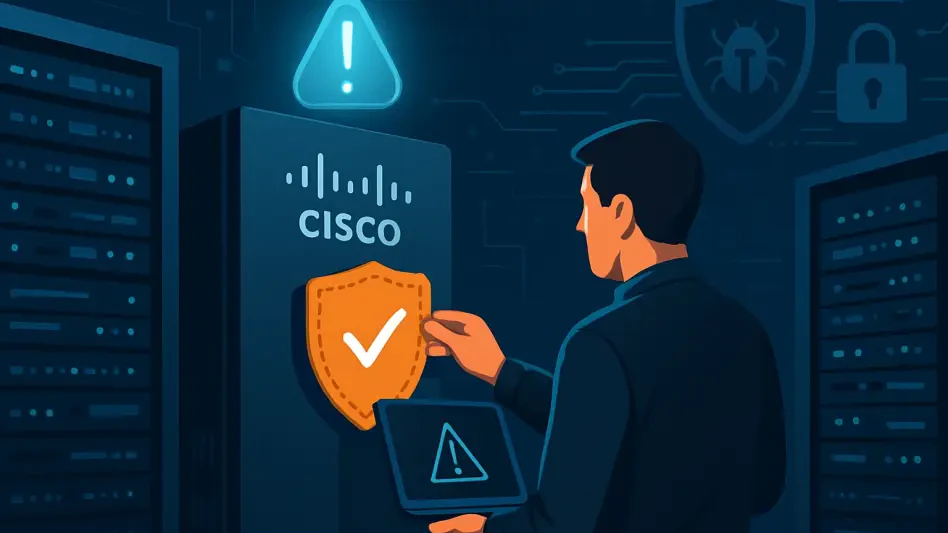Imagine a sprawling corporate network, the digital backbone of an enterprise, suddenly grinding to a halt due to a single, invisible flaw exploited by malicious actors halfway across the globe. This scenario is not a distant possibility but a pressing reality as Cisco, a titan in networking solutions, recently unveiled a critical security update for its IOS and IOS XE operating systems, which power an array of routers and switches forming the core of countless organizational infrastructures. The update addresses a zero-day vulnerability, known as CVE-2025-20352, which has already been weaponized in real-world attacks. With a CVSS score of 7.7, this flaw in the Simple Network Management Protocol (SNMP) subsystem could allow attackers to cause denial-of-service (DoS) disruptions or, worse, execute arbitrary code with root privileges if they possess high-level access. The urgency to patch cannot be overstated as compromised credentials have fueled these attacks, exposing a critical weakness in network defenses.
Addressing a Spectrum of High-Risk Vulnerabilities
Beyond the alarming zero-day flaw, Cisco’s latest bundled security update tackles a total of 14 vulnerabilities affecting IOS and IOS XE systems, with eight classified as high-severity. These issues present a range of threats, from enabling DoS conditions to allowing attackers to execute commands with root privileges or bypass authentication entirely during device boot. Such vulnerabilities could lead to catastrophic breaches, potentially compromising sensitive data or halting critical operations. Additionally, five medium-severity flaws pose risks like cross-site scripting (XSS) and access control list (ACL) bypass, with proof-of-concept exploit code already circulating for two of them. Although no active exploitation of these specific medium-severity issues has been reported, their existence heightens the stakes. This comprehensive patch release also extends to other products like SD-WAN vEdge and Wireless Access Point software, addressing further medium-severity risks. The breadth of affected systems underscores the pervasive nature of these security gaps across diverse network environments.
The Urgency of Timely Action and Robust Defenses
Reflecting on Cisco’s response, it becomes evident that the active exploitation of the zero-day vulnerability has already posed tangible threats to network integrity, demanding immediate attention from system administrators. The diversity of flaws patched in this update, spanning from routers to specialized software, highlights the complex challenge of securing modern infrastructures against sophisticated attack vectors. Looking back, the existence of exploit code for some vulnerabilities, even those not yet weaponized, serves as a warning of potential future risks. Moving forward, the critical takeaway is the need for swift application of these patches to prevent disruptions or breaches. Network administrators should prioritize updating to the latest versions of IOS and IOS XE, alongside strengthening access controls to mitigate risks tied to compromised credentials. Additionally, continuous monitoring for unusual activity and adopting a layered security approach will be essential to safeguard against evolving cyber threats that target foundational systems.








